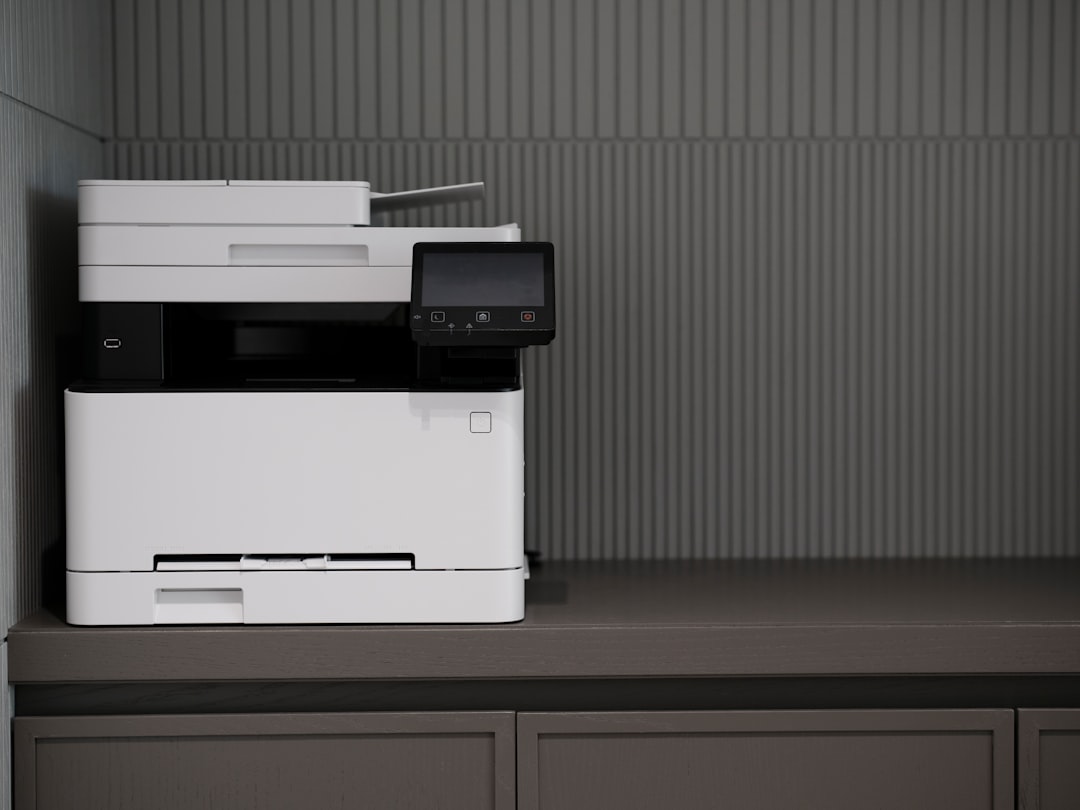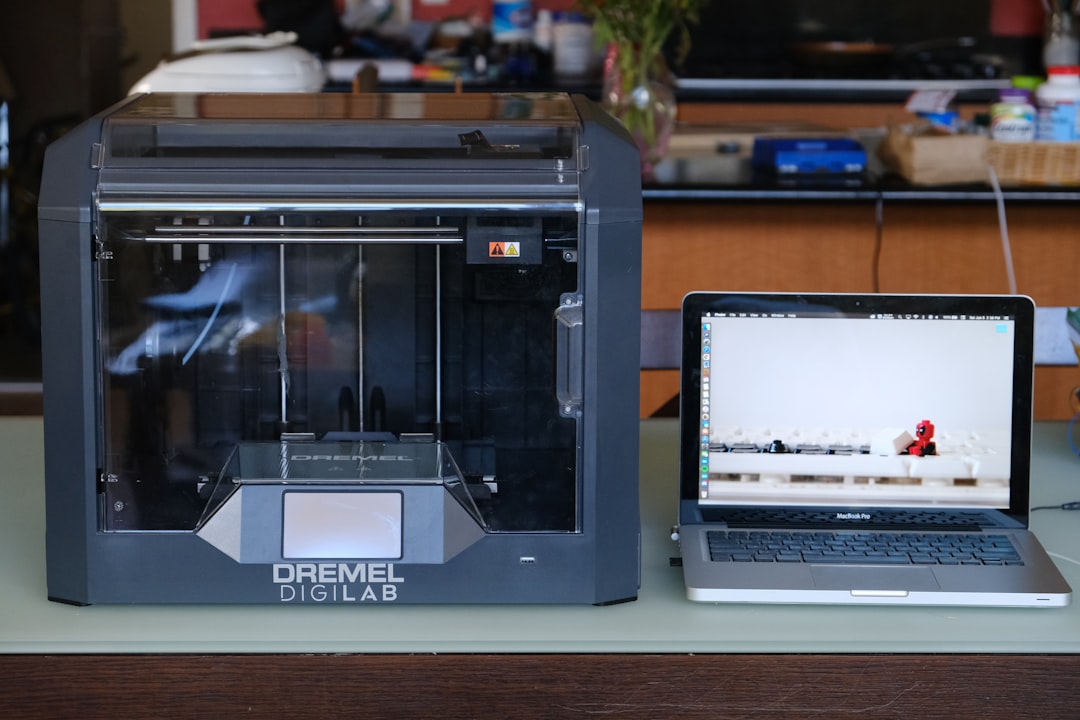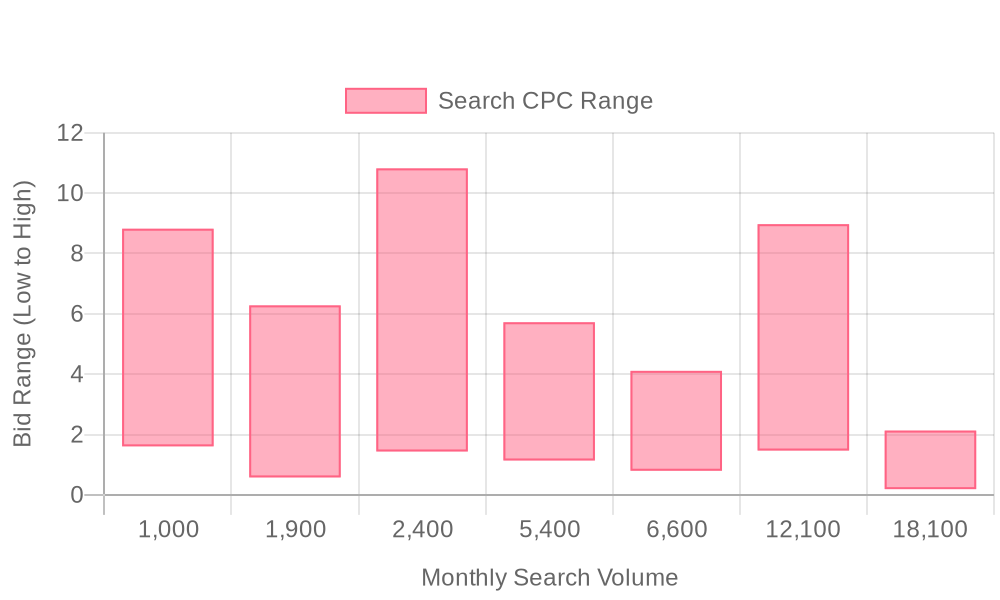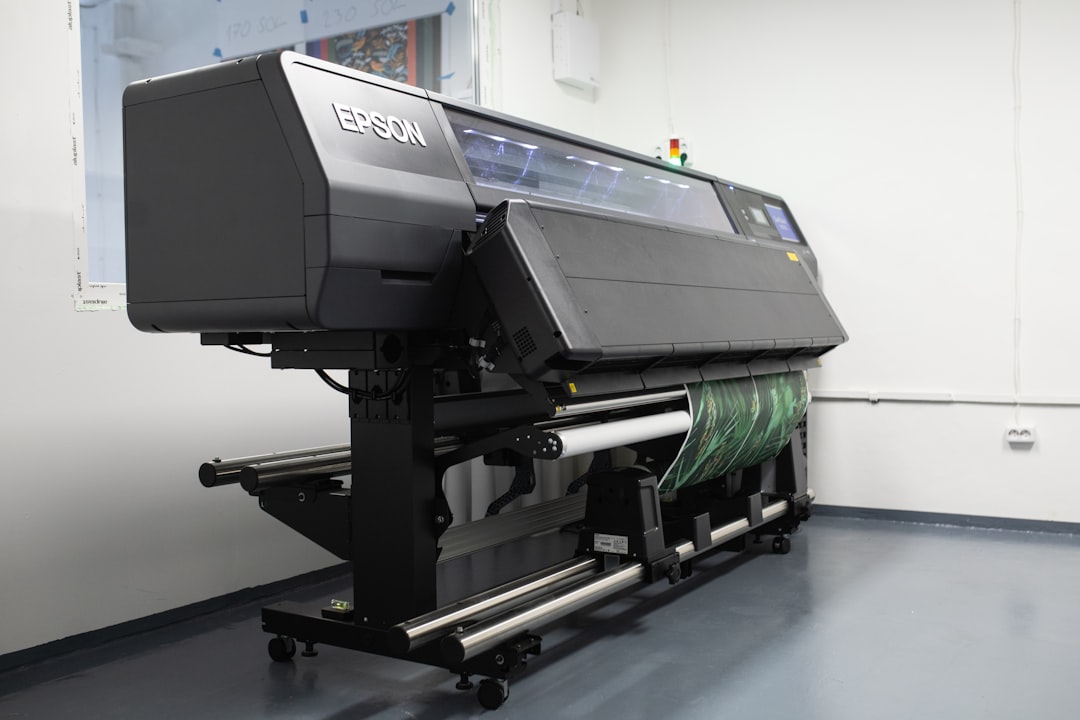
Supercharge your lead generation with a FREE Google Ads audit - no strings attached! See how you can generate more and higher quality leads
Get My Free Google Ads AuditFree consultation

No commitment
Supercharge your lead generation with a FREE LinkedIn Ads audit - no strings attached! See how you can generate more and higher quality leads
Get My Free Google Ads AuditFree consultation

No commitment
Supercharge your lead generation with a FREE Meta Ads audit - no strings attached! See how you can generate more and higher quality leads
Get My Free Google Ads AuditGet My Free LinkedIn Ads AuditGet My Free Meta Ads AuditFree consultation

No commitment
Supercharge your lead generation with a FREE Google Ads audit - no strings attached! See how you can generate more and higher quality leads
Get My Free Google Ads AuditFree consultation

No commitment
In the rapidly evolving landscape of Google Ads for Printing Supplies, companies face unique challenges as they strive to maximize their presence and ROI. The printing supplies market demands a tailored approach to digital advertising due to its specialized nature. Professionals and entrepreneurs in this field need clear, actionable strategies to effectively target their desired audiences and convert interest into tangible sales. By understanding the intricacies of Google Ads, businesses can intercept high-intent buyers exactly when they are searching for solutions specific to printing. This guide explores how Google Ads can leverage unique industry terminology, specialized offers, and eco-friendly initiatives to connect with customers and elevate your marketing performance.

Printing supply marketers operate in a landscape where generic targeting is insufficient and high-value accounts require tailored engagement. Success hinges on precise audience segmentation and a data-driven approach that matches commercial intent with relevant messaging at every touchpoint.
Modern B2B strategies demand more than surface-level analytics; they require visibility into account-level engagement and buyer readiness. By integrating advanced data solutions, marketers can identify and prioritize in-market companies, ensuring Google Ads budgets fuel lead generation with measurable business impact.
Focus on these foundational steps to align Google Ads with your printing supplies lead-generation efforts, or get started for free with Sona, creating a resilient and scalable revenue engine.
Digital visibility is integral for printing supplies providers aiming to outpace industry volatility and drive sustainable revenue growth. Google Ads offers a direct channel to engage purchasing professionals, print shop managers, and procurement teams precisely when they are evaluating suppliers or searching for urgent stock replenishment. For actionable tips on leveraging Google Ads in this sector, see these strategies for printing businesses.
With advanced targeting, printing supplies companies can promote higher-margin products and specialty services to segmented audiences, ensuring relevance and increasing average order values. Real-time campaign data enables rapid response to the fluctuating needs typical in the printing industry, allowing marketers to shift budgets toward high-performing offers or regions as soon as demand spikes.
Effective cross-channel ad syncing ensures that printing suppliers reach new geographies and verticals with consistent messaging, which is essential for expanding market share. Integrated analytics connect digital interactions to offline sales, equipping marketers with actionable insights to optimize spend. By identifying website visitors, teams can move beyond anonymous impressions to prioritize outreach for those most likely to convert, streamlining both sales and marketing efforts.
Unified data across CRM, ad platforms, and analytics provides a foundation for smarter audience building and more precise retargeting. As leads progress through the funnel, dynamic audience segmentation and real-time intent signals help printing suppliers deliver hyper-personalized messaging. This level of orchestration is crucial for driving measurable ROI, reducing wasted ad spend, and capturing every qualified sales opportunity in a competitive digital landscape. Ready to unlock more value from your digital campaigns? Get started for free with Sona.


Expanding reach in the printing supplies market requires precise targeting and sharp market analysis. High-growth brands consistently identify underexploited demand pockets and build agile campaigns that convert intent into revenue. For a deeper dive into B2B demand generation tactics, explore our actionable playbooks.
Ready to uncover overlooked audiences and maximize advertising impact? Get started for free with Sona.

Audience segmentation is the foundation of high-impact digital marketing for printing suppliers. By dividing buyers into specific groups based on real purchase signals, marketers can reach commercial accounts, procurement teams, and specialized verticals with messaging tailored to their needs. This approach elevates campaign efficiency, concentrating spend on segments most likely to convert and maximizing the ROI on every ad impression. To explore how printing businesses are using digital ads to attract new customers, review these Google Ads strategies for printing services.

| Industry | Keyword | Monthly Search Volume | Competition Level | Low Bid | High Bid |
| Printing Supplies | printer cartridges | 1000 | HIGH | 1.61 | 8.82 |
| Printing Supplies | printing supplies | 1900 | HIGH | 0.58 | 6.28 |
| Printing Supplies | hp printer cartridges | 2400 | HIGH | 1.44 | 10.82 |
| Printing Supplies | printer ink cartridges | 5400 | HIGH | 1.14 | 5.72 |
| Printing Supplies | screen printing supplies | 6600 | HIGH | 0.8 | 4.11 |
| Printing Supplies | pocket folders | 12100 | HIGH | 1.47 | 8.97 |
| Printing Supplies | t shirt printing machine | 18100 | HIGH | 0.19 | 2.13 |
Keyword planning for Google Ads in the printing supplies industry requires an approach that aligns tightly with how buyers actually search and purchase. High-volume, high-intent keywords such as "eco-friendly printing supplies" or "local printing supplies discounts" attract commercial buyers who are ready to act. These terms map directly to procurement cycles and industry trends, ensuring that ad impressions reach audiences with clear purchasing objectives. For a comprehensive list of the most searched keywords in the printing industry, explore this printing industry keywords resource.
To expand reach while maintaining quality, integrating long-tail keywords is essential. Terms like specific printer model numbers or niche technology phrases ("latex ink cartridges for HP 570") target professionals researching specialized solutions. This strategy not only narrows the field to in-market prospects but also increases the likelihood of conversion due to precise alignment with buyer needs. Learn how precise audience intelligence can help you reach these highly targeted segments.
Incorporating negative keywords is critical for efficiency, allowing campaigns to filter out unqualified traffic and prevent budget waste. Excluding irrelevant queries like "DIY printables" or "printer troubleshooting tips" ensures ad spend remains focused on buyers with true commercial intent. To optimize this process, see how to use negative keywords effectively.
Regular analysis of search trends enables marketers to anticipate demand shifts, such as a surge in interest for sustainable materials or last-minute supply discounts. By leveraging these insights, keyword lists can be refreshed to capture emerging needs and outperform static, outdated strategies. Marketers using platforms that unify go-to-market data gain an edge by identifying which keywords drive the highest-value account activity, allowing for real-time budget reallocation to top-performing terms. Audience enrichment and CRM syncing further refine targeting, ensuring only the most relevant and valuable leads receive ad exposure as buyer intent signals evolve.
Looking to streamline your keyword management and maximize campaign ROI? Get started for free with Sona.
Precision in keyword selection underpins every successful Google Ads for Printing Supplies initiative. Start by clustering keywords based on specific service types: for example, group "bulk toner cartridges," "large format printer ink," and "copier maintenance kits" into distinct ad groups. This approach ensures that ad relevance and Quality Score remain high, directly impacting cost efficiency and click-through rates. For a curated list of high-performing keywords relevant to the print media industry, visit print media keywords.
Next, localize campaigns by layering geographic modifiers onto high-intent queries. Phrases like "wholesale printer supplies Chicago" or "screen printing chemicals near Dallas" help capture customers with immediate proximity-based needs and reduce wasted spend. Negative keywords are essential for eliminating irrelevant clicks and wasted budget. Excluding terms such as "free templates" or "DIY cartridge refills" prevents non-commercial traffic from diluting campaign ROI. Platforms that unify search data and visitor identification allow for further refinement, enabling marketers to move beyond anonymous impressions and focus on engaged business prospects.
Effective Google Ads for printing supplies must address industry pain points with direct, actionable messaging. Highlight common frustrations like missed lead opportunities and the consequences of slow response times, positioning your brand as the solution for urgent procurement needs. For inspiration, review a range of ad copy examples designed to spark compelling messaging for your campaigns.
Incorporate trust-building elements such as industry certifications, satisfaction guarantees, or real-time support availability to reassure decision-makers evaluating new suppliers. Leverage personalized offers that align with each buyer’s journey stage. Consider ad variants that prompt initial consultations for new prospects and bulk order discounts for returning customers. Data-driven platforms enhance this process by syncing real-time audience insights directly into your ad creation workflow, allowing for account-specific messaging and timely incentives. This enables campaigns to adapt messaging dynamically as leads progress through the funnel, ensuring each touchpoint is relevant and conversion-focused.
Landing pages for printing supplies advertising must provide a seamless transition from ad to onsite experience. Each page should mirror the language and offer presented in the ad, creating an immediate sense of context for the visitor. Including ROI calculators, instant quote tools, and CTAs tailored to the visitor’s account attributes significantly improves conversion rates, especially when informed by company-level data.
Integrate trust signals and clear next steps to reduce friction for buyers. Showcasing client logos, compliance certifications, and real-time inventory levels builds confidence and urgency. When landing page views are connected with visitor identity tools, marketers can immediately spot which companies are engaging and prioritize follow-up actions, ensuring no high-value prospect slips through the cracks.
Continuous improvement is the foundation of effective PPC for printing. Strategic approaches, such as those outlined in PPC strategies for print providers, can help you refine campaigns for maximum efficiency. Use Test CPA bidding strategies to determine optimal spend for each audience segment, reallocating budget in real time as performance data evolves. By importing offline sales and engagement data, marketers gain a comprehensive view of the buyer journey, enabling smarter bid adjustments and more accurate ROI measurement.
Advanced conversion tracking closes the attribution gap between online engagement and offline sales, giving revenue teams a unified view of marketing impact. When audience and lead data are synced automatically between CRM and ad platforms, campaigns benefit from refreshed targeting and up-to-date exclusion lists. This results in more efficient spend, higher conversion rates, and a measurable improvement in pipeline velocity for B2B printing supply businesses.

Expanding your reach in the printing supplies industry requires a blend of creativity and data-driven execution. Businesses that integrate both digital and community-focused strategies consistently outperform competitors in visibility and customer engagement. For expert insights on marketing measurement and B2B growth, visit the Sona blog.
Leveraging Google Ads for Printing Supplies amplifies these initiatives by delivering tailored messaging to segmented audiences at scale. For practical guidance on how printing businesses can use Google Ads to attract customers and generate leads, review this Google Ads for Printing Services guide. When campaign execution is tightly aligned with audience insights and real-time intent signals, marketing investments yield measurable, sustainable growth. To unify your marketing touchpoints and optimize your strategy, get started for free with Sona.
Navigating the world of Google Ads for the printing supplies industry can initially seem daunting, but it's a journey rich with opportunities. With the right strategies and insights, advertising your printing supplies effectively on this platform can significantly enhance your visibility and boost sales.
Throughout this article, we explored the specific challenges faced by printing supplies businesses and how tailored Google Ads strategies can address these. We discussed setting up campaigns, targeting the right audience, and optimizing ads to maximize ROI. By implementing these best practices, you can transform your advertising efforts into a powerhouse for growth.
Imagine the possibilities when your business not only reaches its target audience but also engages them meaningfully, leading to increased conversions and customer loyalty. With strategic advertising approaches, you're not just competing—you’re leading the way in the printing supplies market.
To fully experience the benefits of a unified approach to go-to-market data and actionable insights, start for free with us today. Unlock the potential of your advertising campaigns and witness firsthand the impact on your business growth.
Best practices include precise audience segmentation, using industry-specific keywords and negative keywords, aligning landing pages with ad creatives, continuous optimization of campaigns, and integrating cross-channel marketing strategies.
Optimize campaigns by monitoring account-level engagement, reallocating spend to high-performing segments, using intent signals to identify shifts in activity, and integrating advanced conversion tracking for a full view of ROI.
Target high-intent keywords such as 'eco-friendly printing supplies' and 'bulk printer cartridges,' and use long-tail keywords for specialized products, while excluding irrelevant clicks with negative keywords.
Google Ads offers a direct channel to engage purchasing professionals and procurement teams, promoting higher-margin products and specialty services, and using integrated analytics to connect digital interactions to offline sales for measurable ROI.
Setting up involves building targeted keyword lists, developing compelling ad copy, designing effective landing pages, and implementing data-driven optimizations to ensure campaigns align with audience insights and business goals.
Join results-focused teams combining Sona Platform automation with advanced Google Ads strategies to scale lead generation

Connect your existing CRM

Free Account Enrichment

No setup fees
No commitment required

Free consultation

Get a custom Google Ads roadmap for your business
Join results-focused teams combining Sona Platform automation with advanced Meta Ads strategies to scale lead generation

Connect your existing CRM

Free Account Enrichment

No setup fees
No commitment required

Free consultation

Get a custom Google Ads roadmap for your business
Join results-focused teams combining Sona Platform automation with advanced LinkedIn Ads strategies to scale lead generation

Connect your existing CRM

Free Account Enrichment

No setup fees
No commitment required

Free consultation

Get a custom Google Ads roadmap for your business
Join results-focused teams using Sona Platform automation to activate unified sales and marketing data, maximize ROI on marketing investments, and drive measurable growth

Connect your existing CRM

Free Account Enrichment

No setup fees
No commitment required

Free consultation

Get a custom Google Ads roadmap for your business
Over 500+ auto detailing businesses trust our platform to grow their revenue
Join results-focused teams using Sona Platform automation to activate unified sales and marketing data, maximize ROI on marketing investments, and drive measurable growth

Connect your existing CRM

Free Account Enrichment

No setup fees
No commitment required

Free consultation

Get a custom Google Ads roadmap for your business
Over 500+ auto detailing businesses trust our platform to grow their revenue
Join results-focused teams using Sona Platform automation to activate unified sales and marketing data, maximize ROI on marketing investments, and drive measurable growth

Connect your existing CRM

Free Account Enrichment

No setup fees
No commitment required

Free consultation

Get a custom Google Ads roadmap for your business
Over 500+ auto detailing businesses trust our platform to grow their revenue
Our team of experts can implement your Google Ads campaigns, then show you how Sona helps you manage exceptional campaign performance and sales.
Schedule your FREE 15-minute strategy sessionOur team of experts can implement your Meta Ads campaigns, then show you how Sona helps you manage exceptional campaign performance and sales.
Schedule your FREE 15-minute strategy sessionOur team of experts can implement your LinkedIn Ads campaigns, then show you how Sona helps you manage exceptional campaign performance and sales.
Schedule your FREE 15-minute strategy sessionOur team of experts can help improve your demand generation strategy, and can show you how advanced attribution and data activation can help you realize more opportunities and improve sales performance.
Schedule your FREE 30-minute strategy sessionOur team of experts can help improve your demand generation strategy, and can show you how advanced attribution and data activation can help you realize more opportunities and improve sales performance.
Schedule your FREE 30-minute strategy sessionOur team of experts can help improve your demand generation strategy, and can show you how advanced attribution and data activation can help you realize more opportunities and improve sales performance.
Schedule your FREE 30-minute strategy sessionOur team of experts can help improve your demand generation strategy, and can show you how advanced attribution and data activation can help you realize more opportunities and improve sales performance.
Schedule your FREE 30-minute strategy session





Launch campaigns that generate qualified leads in 30 days or less.
